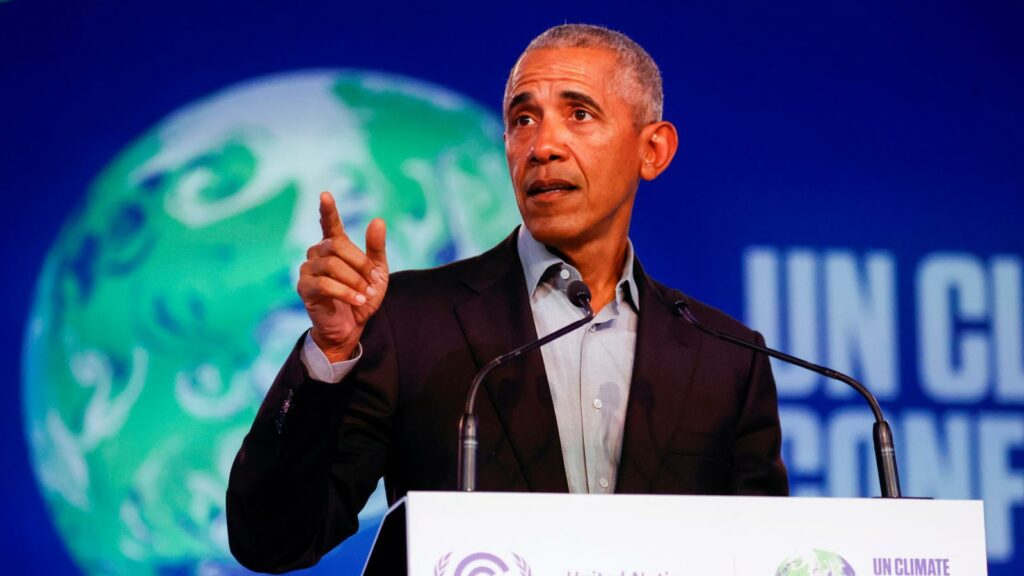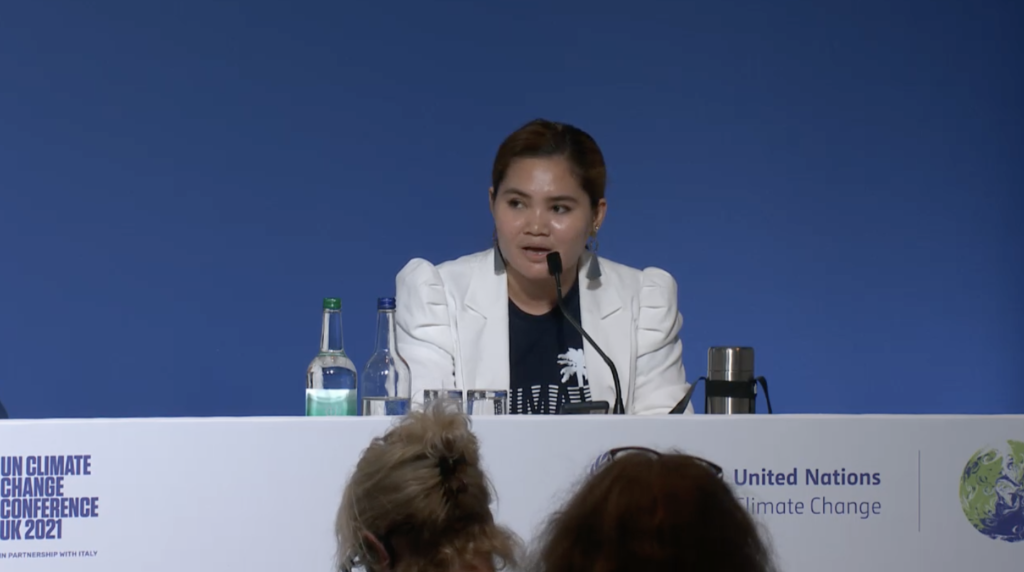Adaptation for loss and damage at COP26

Adaptation for loss and damage at COP26
The 21st of October 2021 marked the commencement of the Conference of the Parties (COP26) that took place in Glasgow. World leaders arrived in Scotland along with tens of thousands of negotiators, government representatives, businesses, and citizens for a two-week discussion on keys issues associated with climate change. One major issue that was considered throughout the conference was the challenges in relation to adaptation, loss & damage. Throughout this blog post I will discuss some highlights from COP26 in relation to this topic.
Importance of adaptation for loss and damage.

The occurrence of devastating events as a result of increasing climate change are highly concerning and can no longer be ignored. Heightened occurrences of heat stress, cyclones, floods, droughts, and typhoons are all expected in the coming years as a result of rising global temperatures and GHG emissions. The results of such events can be detrimental to people’s livelihoods, lifestyles, mental health, safety, and wellbeing along with a huge impact on socioeconomic losses. It was stated at COP26 by Lisa Plattner who spoke on behalf of the WWF organization that economic loss due to loss and damage is estimated to be between $290-580 billion US dollars annually by 2030, albeit this alarming figure she went on to state how this figure is more than likely underestimated due to unpredictable future trends. Former US president Barrack Obama added to the sense of urgency for adaptation around these issues by stating how 85% of the global population have already experienced increased extreme weather events as a result of climate change.
One major issue in relation to climate related loss and damage is the issue of injustice. These events already have and will continue to affect the most vulnerable communities such as poorer countries and Island regions despite the fact they are the ones least responsible for the on coming devastations. They lack resources, technologies, finances, and information in order to implement adaptation to the extent that is required. The sense of necessity for countries and governments to be more ambitious in their efforts to aid better adaptation methods for loss and damage and to protect those most vulnerable was further highlighted by a concluding statement Barrack Obama “ All of us have a part to play, all of us have work to do, all of us have sacrifices to make but those of us who live in big wealthy countries, those of us who help precipitate the problem, we have an added burden to make sure that we are working with, helping out and assisting those who are less responsible and less able”.
Successes and Failures at COP26 for Adaptation commitments for Loss and Damage
Successes
The action needed for adequate adaptation requires a constructive spirit amongst the 200 nations that attended the conference as stated by the COP26 president Alok Sharma. Sharma also stated the importance of transparency and inclusivity in policy and decision making. During COP26 action towards adaptation for loss and damage was seen in some areas, and can be considered a major advantage in the achievement of developing a more resilient future.
This was kickstarted by Lisa Plattner’s announcement about Scotland pleading 1 million pounds to address loss and damage caused by climate change for the worlds most vulnerable communities. Following Lisa’s announcement, Monica Medina the assistant secretary for ocean environment and science announced that under the Prepare initiative which is an emergency plan set up for adaptation and resilience set up by President Biden, 9 million dollars will go towards the Local 2030 Islands Network. The local 2030 Islands Network is an Island-Led coalition of partners committed to achieving successful adaptation methods for the oncoming crisis. This can be considered a major aid to Island nations as they represent one of the most vulnerable groups to the threat of slow climate change extremes such as rising sea levels.
Some sensational commitments were finalized in the fight towards a more resilient future. $232 million dollars was committed to the Adaptation Fund, this figure represents the highest single mobilization to the fund and double the previous highest collective mobilization. From the 232 million, 20 million was contributed from the UK. The adaptation fund totaled at 351.6 million by the end of the 9th of November 2021. The support of locally led adaptation was shown by global leaders by committing over 70 endorsements to the Principally Locally Led Adaptation and over $450 million dollars mobilized for initiatives and programs aimed to enhance locally led approaches for adaptation for anticipated increases of loss and damage. Some of these programs include the LIFE-AR program, which aims to support a shift away from “business as usual approaches” to more effective climate responses in least developed countries. In conclusion 88 countries are currently covered by adaptation communications or national adaptation plans to increase preparedness to climate risks such as increasing loss and damage. The commitments can be seen as positive stepping stones for a more resilient future, however pessimism and criticism surrounding these commitments, are not absent.
Failures
The disappointment associated with the commitments was highlighted by the prime minister of Fiji, Frank Bainimarama. He stated how the commitments remain to be “timid” and “inadequate” and how several pledges are missing in action, along with others showing up with insufficient commitments. He emphasized how Fiji has been hit by 13 cyclones since the Paris Agreements, along with increasing sea levels threatening over 800,000 livelihoods, clearly highlighting how developed countries have and continue to disappoint island regions such as Fiji in their fight against adaptation for loss and damage. His disappointment in the developed countries and their lack of willingness to aid more vulnerable countries by lending resources such as finances and technologies was undeniable. Another concern that was apparent at COP26 in relation to loss and damage was the lack of private sector finance in the 100-billion-dollar goal. This is an annual goal for developed countries to mobilize 100 billion dollars of climate finance annually for climate action in developing countries by 2025. This is a major concern, as it is vital that the private sector contributes adequately in order to reach this goal, so that the money can used for adaptation and resilience plans in developing countries for when disaster strikes, which is inevitable.

What needs to happen next for adaptation for loss and damage?
At COP26 the importance for the implementation of investment and insurance plans to enable countries to adapt to expected losses was emphasized, especially for those most vulnerable and living on the front lines of climate change. As previously stated, developed countries have a greater responsibility in the action towards a more resilient world, as they are the most responsible. Developed countries must ensure to work with and protect the most vulnerable communities by ensuring transparent policies, along with the inclusion of indigenous peoples, and people living on the front lines of climate change. These people must be involved in the development of policies and decision making, as they can provide parties with first-hand testimonies of the impacts and the needs of the victims. Not only is the protection of vulnerable communities essential, but the communities that have been impacted deserve and demand justice for the turmoil endured by their communities as a result of these disasters. This point was raised by climate change advocate Marinel Ubaldo, survivor of typhoon Haiyan 2013, she stated how the typhoon devastated her community and killed 6,300 people and highlighted how the effects are still felt 8 years later. She declared passionately how her community does not deserve to live in constant fear of climate extremes but deserve a hopeful future. This is up to developing countries to be more ambitious, transparent, and conscious.

In conclusion climate change does not discriminate, it will continue to affect us regardless of age, race, religion political opinion and wealth, therefore a more combined effort from developed countries is required, the commitments made must be followed through, promises made must be transparent and inclusive, the desired and promised funding must be mobilized & accessible to the vulnerable communities, and climate change cannot be seen as an opportunity to score political points. The commitments made at COP26 are great stepping stones for change, however real change occurs outside of COP26, with continued efforts on delivering the promises made.
Additional reading and resources:
- https://ukcop26.org/the-conference/cop26-outcomes/
- https://ukcop26.org/cop26-goals/adaptation/
- https://www.youtube.com/watch?v=69EMd4csZRY&t=837s
- https://www.youtube.com/watch?v=bFzVlKzGMrI
- https://www.theguardian.com/environment/2021/nov/13/what-is-loss-and-damage-and-why-is-it-critical-for-success-at-cop26